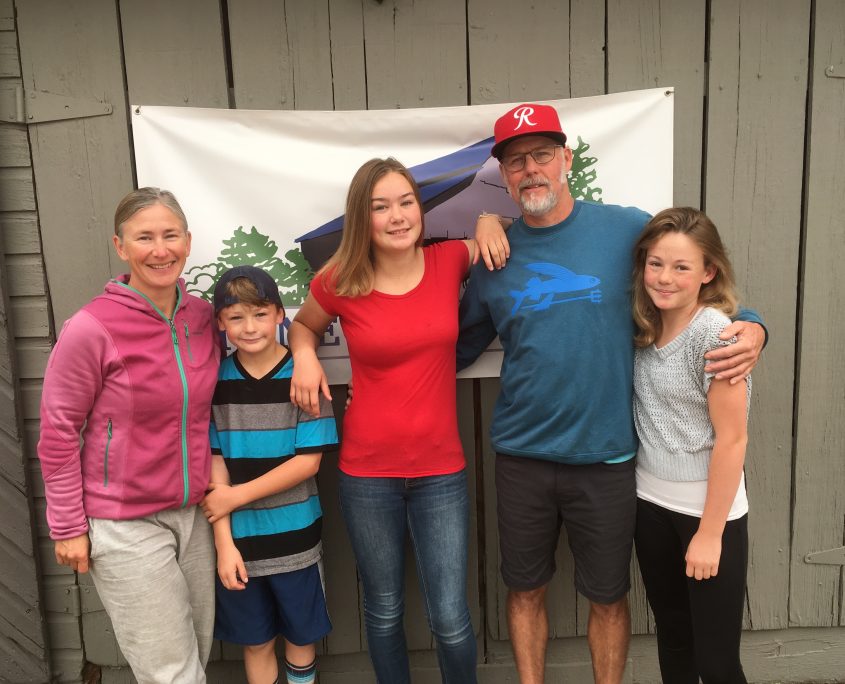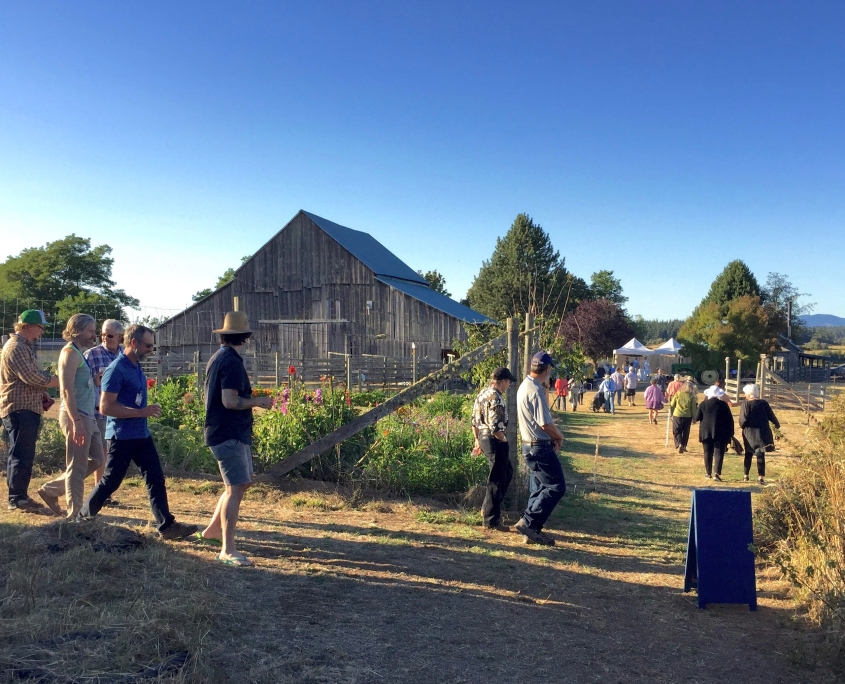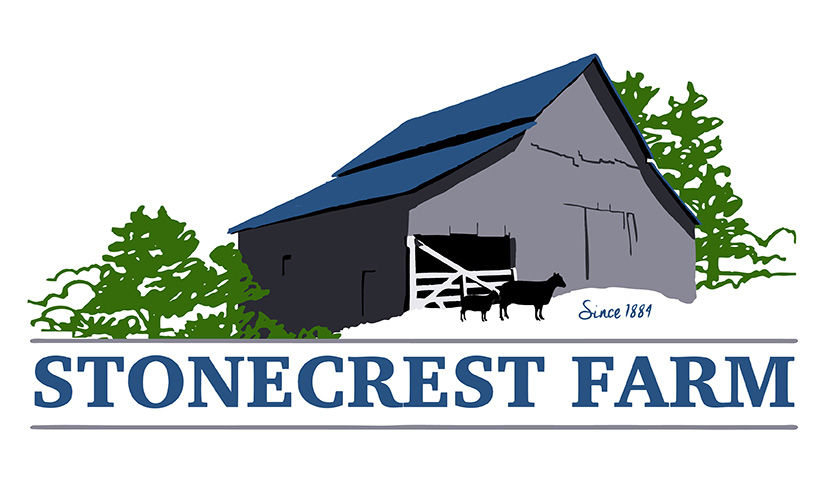Historic Stonecrest Farm —A Lopez Legacy
Lopez Community Land Trust took possession of Stonecrest Farm– a 48 acre historic working farm—in May of 2017. LCLT needed to raise $1,000,000 to purchase Stonecrest Farm. LCLT put out a request for proposals for a farmer to lease the farm, and announced in the fall of 2017 that a farm family had been chosen—Meike Meissner, Mike McMahon, and their children Hetty, Lolo, and Andris would be moving in the following spring. On April 3, 2018, LCLT was grateful to announce that the family had arrived and immediately began to regenerate this legacy farm.

Mike, Meike & Family
Meike and Mike then formed their business Stonecrest Farm and Graziers. Their focus is regenerating soil through livestock, similar to the approach of Polyface farm, with a full contingent of cattle, sheep, pigs, chickens and the family milk cow. Meike and Mike are both excellent teachers regarding regenerative farming practices.
Land is an essential element of farming. After a century of significant farmland loss throughout the San Juan Islands (USDA census records show a 27% loss from 2007 – 2012), access to affordable, productive farmland is one of the greatest challenges that our region’s farmers face. The U.S. loses farmland at a rate of 2 acres/minute, over 240 million acres since 1970. The average age of a farmer in San Juan County is 62. Who will farm? The majority of farmers in the County today have no plan for transferring their farm operation to the next generation, and for many, the value of their farmland as real estate is one of their greatest assets and a necessary part of their retirement plan. Farmland in San Juan County is indeed being preserved but not actively farmed. Repeated haying of preserved land doesn’t increase soil health and fertility, and offers little variety for our table.
How will we train new farmers and where will farming happen? With the disruption of climate where drought has caused parts of central California to be incapable of food production (564,000 acres of agricultural land is predicted to be idled in the Central Valley of California alone due to drought), with more and more food produced with GMO’s, pesticides, and unnatural processing, with local ferry service that is unreliable in emergencies and remote rural areas as the last to be served in any crisis, how will Lopez feed itself? How can our children access healthy food? How will our community assure that new farmers are trained and supported? Finally, with some of the basic farming infrastructure of these islands missing or in disarray, how can we garner the necessary infrastructure for food security?

Full-time residents on Lopez Island will purchase an estimated $9.4 million worth of food this year. Additionally, restaurants will purchase an estimated $1 million worth of food. Therefore, the total value of food consumption on Lopez Island is estimated at $10.4 million. A significant chunk of these dollars would go far in our local economy if they were staying with local farm.
Make history with a lasting legacy by ensuring that our farms are farmed, that our precious farmland stays farmland – forever.


